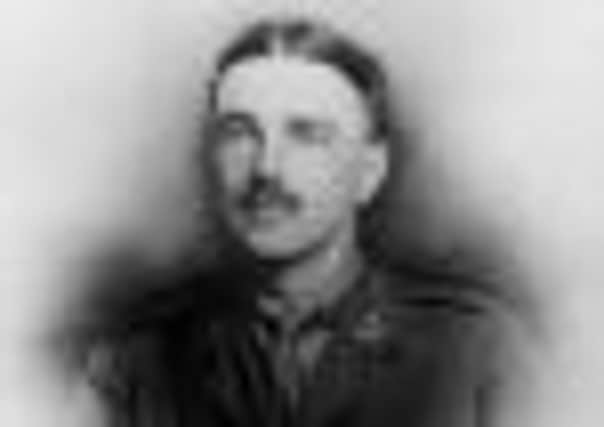Artwork commemorates famous war poet Wilfred Owen’s time in Craiglockhart hospital


Entitled Hillside and designed by artist Lara Greene, the distinctive work was commissioned by the local community council and is located outside the Post Office on Colinton Road.
Both Wilfred Owen and fellow poet Siegfried Sassoon were treated for shellshock at the former Craiglockhart Hydropathic Institution during the First World War – now the site of Napier University’s campus.
Advertisement
Hide AdAdvertisement
Hide AdAs a result, some of the most famous poems of the 20th century were composed at the hospital; Owen wrote well-known poems Anthem for Doomed Youth and Dulce Et Decorum Est in 1917 – verses now well-known to millions of schoolchildren.


He only spent four months in the city but during that period became active in the hospital and wider community, teaching at Tynecastle School, carrying out research in the Advocate’s Library and editing the hospital’s fortnightly magazine, The Hydra.
It was at Craiglockhart that Owen met Sassoon and together the pair often visited Mortonhall Golf Club.
Owen returned to the frontline after his recovery and died at the age of 25 – after being awarded the Military Cross for his bravery – just seven days before the Armistice.
The pair’s time at the hospital was told in the Pat Barker book and film, Regeneration.
One of Owen’s poems, Spring Offensive, is written along the side of the new sculpture on a series of brass panels.
The powder-coated steel artwork depicts an imaginary Owen atop the hills of Craiglockhart as he walked and pondered his experiences.
At the time of being commissioned, artist Lara lived locally and was a regular walker in the area. She said: “I very much appreciated being able to walk from my flat and get up on a lovely hilltop and view the world from a different perspective or jog along the canalside. This distinctive landmark was inspired by the Craiglockhart environment, its hills, plants and waterways.
Advertisement
Hide AdAdvertisement
Hide Ad“The other inspiration was the poetry of Wilfred Owen whose story has a local connection – the natural surroundings greatly helped the officers in their recovery as outdoor activity was encouraged.”
The sculpture was created as a result of £5000 grant funding from the South West Neighbourhood Partnership, while the remainder of the £12,000 budget was sourced by members of Craiglockhart Community Council thorugh various fundraisng events
Chair Alan Dickson said: “This has been a very long road but we now have this iconic sculpture – it will be controversial but will also become, I hope, adopted as a member of our community.”
Council leader and local councillor Andrew Burns, who unveiled the piece, said: “I’m very much in favour of public art, particularly if it creates a talking point and adds vibrancy to a local community.”
‘His poetry contrasts the horrors and beauty of life’
ARTIST Lara Greene (pictured) used a wide range of inspirations to create her striking work depicting the poet on the hills of Craiglockhart.
The main influence for the piece was the treatment given to both Wilfred Owen and Siegfried Sassoon for their shellshock. At the time, many hospitals in the UK were using electro-shock therapy to treat the problem, but the staff in Edinburgh pioneered a treatment using dream therapy to bring the psychological trauma out into the open. The wide-open spaces around Craiglockhart were also instrumental in helping Owen recover and go on to produce some of his most famous work
Lara said: “The sculpture shows Owen atop a hillside in Craiglockhart. In the poem inscribed on the sculpture he talks about looking over a hill out on to the battlefield, and so I wanted to use that idea that he was helped in facing this darkness by the area itself.
“There are also lines of snakes coming out from his feet, which represent the horrors of the war which he ultimately helped bring out into the open through his poetry.
Advertisement
Hide AdAdvertisement
Hide Ad“I dotted spiky plants on the sculpture, such as brambles, which are found locally. These plants can cut, but they have delicate flowers, and I think that married up to the contrast in his poetry between the horrors of life and the beauty of it.”